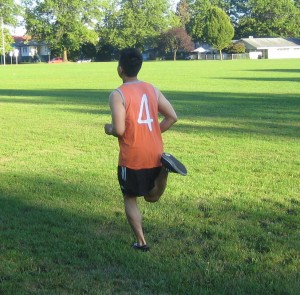Bone spurs which is also known as osteophytes are protrusions or extensions beyond the normal limits or above the surface. Bone spurs in the heel do not usually cause symptoms initially.
Heel spurs are calcium deposits that will cause protrusion of the heel bone. They are usually associated with plantar fasciitis which is a painful inflammation of the fibrous band of connective tissue or the plantar fascia which is located along the bottom of the foot and attaches the heel bone to the ball of the foot.
Common causes
- Strains on the muscles of the foot and ligaments
- Stretching the plantar fascia
- A repeated tearing of the membrane that is covering the heel bone.
- Engaging in activities that involves large amounts of jumping and running
Risk factors

- Jogging or running on hard surfaces
- Improper way of walking which places severe strain on the heel bone as well as the nerves and ligaments found close to the heel.
- Wearing ill fitting or worn out shoes, especially those that lack arch support
- Overweight
- Having a flat feet or high arches
- Sudden bursts of physical activities
Common symptoms
- An intermittent or chronic pain especially when jogging, walking or running, if there is inflammation at the formation of the spur.
- Pain can be felt which is similar to a pin or knife sticking on the base of the feet when standing up especially in the morning and eventually the pain becomes a dull ache.
- Pain can be felt when standing after sitting for long periods of time.
Treatment
- Take the prescribed anti-inflammatory medication such as ibuprofen or an injection of cortisone since these can help in minimizing pain and swelling.
- Wear orthotic devices or shoe inserts can help relieve the pressure off the plantar spurs while heel lifts can help in minimizing stress placed on the Achilles tendon and helps lessen sore spurs at the rear part of the heel.
- Wear running shoes that have soft soles that are cushioned can help minimize the irritation of inflamed tissues from plantar fasciitis and heel spurs.
- Elevate the foot above the level of the heart for proper blood circulation.
- Apply an ice pack over the affected area at least 20 minutes every few hours to help lessen the inflammation and relieves the pain. Avoid placing the ice directly against the skin of the foot since it can damage the skin. Make sure that it is wrapped using a small towel and place it over the affected area.
- The individual should take a break especially the affected heel in order to help minimize the inflammation and limit performing physical activities when the pain is gone.
If the symptoms still persist even if the individual has rested, seek medical help immediately.
Important tips to bear in mind
Heels spurs and plantar fasciitis can be minimized by treating any underlying conditions that can cause this inflammatory disease.
